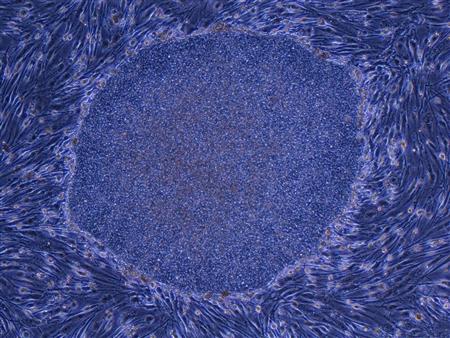The Nobel Prize-winning discovery of how to reprogram ordinary cells to
behave like embryonic stem cells offers a way to skirt around ethical problems
with human embryos, but safety concerns make their future use in treating disease
uncertain. While researchers have already applied the scientific breakthroughs
of Britain's John Gurdon and Japan's Shinya Yamanaka to study how diseases
develop, making such cells into new treatments will involve a lot more checks.
Stem cells act as the body's master cells, providing the source material
for all other cells. They could transform medicine by regenerating tissue for
diseases ranging from blindness to Parkinson's disease. Creating embryo-like
stem cells without destroying embryos gets round a key controversy by avoiding
the need to process embryos left over at fertility clinics - a system that has
led to political objections in the United States and elsewhere.
Reprogrammed cells - known as induced pluripotent stem cells, or iPS
cells - offer an ethically neutral alternative. They have been a source of
intense research since Yamanaka discovered their potential in 2006, building on
work that Gurdon did in frogs and tadpoles 40 years earlier.
SAFETY CONCERNS
Recently, however, different research groups have noticed problems with
iPS cells, suggesting they may not be as good as embryonic ones. In one study,
iPS cells died more quickly and another found multiple genetic mutations,
raising concerns that they could cause tumors. Despite this, Japanese
researchers hope to test iPS cells in clinical trials for a form of blindness
as early as next year - catching up with recent successful eye trials using
embryonic stem cells. Researchers in the West are generally more wary.
"There is a bit of a divergence between Japan and the rest of the
world on this," Chris Mason, professor of regenerative medicine at
University College London, told Reuters. "Scientists in Japan are trying
to move very rapidly towards clinical trials of iPS cells, whereas many of us
still feel there are a lot of issues to overcome, especially in terms of
safety." The future potential for reprogrammed cells is that they could be
taken from sick people who could have their own "person specific cell
replacement" to mend damaged organs or tissues.
But key worries include the fact that iPS technology involves using
genes which could also be tumor-inducing in some circumstances and that other
as-yet undetected problems might crop up after the new cells have been put into
patients. Gurdon played down such worries and said regulatory authorities and
governments should take a step back and let patients assess the potential
benefits and risks for themselves. "If you explain to a patient what can
be done, and what might be the downside - then you should let the patient
choose. Don't have ethicists or ... doctors or whoever say you may or may not
have replacement cells," he told reporters.
DRUG DISCOVERY TOOL
Experts agreed that the pioneering work by the two new Nobel laureates
had changed the field of stem cell research. "What's grand in this
discovery is that these specialized mature cells can rewind in their
development and become stem cells," said Urban Lendahl, chairman of the
Nobel awards committee. Still, many experts believe the true promise of iPS
cells is as unique research tools, rather than necessarily forming the basis of
new medical therapies. They have a key advantage over embryonic stem cells in
that researchers can take them from people with a known disease, offering a
window into how currently incurable illnesses develop at the cellular level.
Already, researchers have made iPS cells from patients with Gaucher's
disease, Down Syndrome, Parkinson's and diabetes. "I see iPS cells more
for use in drug discovery and in understanding the mechanism of different
diseases, rather than therapy," said Dusko Ilic, a senior lecturer in stem
cell science at King's College London. Traditionally, researchers have used
stand-ins for human tissue such as yeast, flies or mice for their drug
research. Now, they can use human cells containing a complete set of the genes
that resulted in a particular disease.
Yahoo News
Please share

Link-building services must feature metrics to properly assess the excellence
ReplyDeleteof the campaign. The metrics need to assess the direct and referrer traffic involving your site
for a particular period, the amount of favorites for your essential keywords, the
targeted and non-targeted websites that are linked to you.
The metrics ought to be able to determine if the links can lead to conversion.
my page :: Spin Rewriter Discount